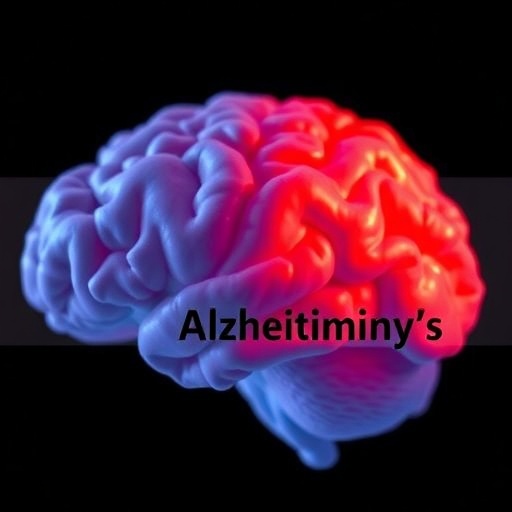Recent studies have brought to light the potential role of Cyclosporine A (CsA) in modulating neuroinflammation, a critical component often associated with the progression of Alzheimer’s disease. Alzheimer’s disease, a chronic neurodegenerative disorder, is characterized by the gradual loss of cognitive function and memory, affecting millions around the globe. Researchers are continuously exploring therapeutic options that could lessen the impact of this debilitating condition. This pursuit led to an intriguing investigation into the effects of CsA on neuroinflammation-related gene expression within a neuronal cell line known as SH-SY5Y.
Cyclosporine A, an immunosuppressant traditionally used in organ transplantation, has garnered attention for its neuroprotective properties. This compound’s mechanism of action involves inhibiting the activation of T-cells and modulating the inflammatory response. The research conducted by Pashaei et al. delves into how these properties might extend beyond immunosuppression and potentially influence the pathways involved in Alzheimer’s disease. The team hypothesized that CsA could either benefit or detrimentally affect neuronal cells depending on the context and timing of its application.
Within the SH-SY5Y human neuroblastoma cell line, the researchers assessed the expression of various neuroinflammatory genes. This cell line models certain aspects of neuronal behavior, making it an effective tool for studying neurodegenerative diseases. The results unveiled a complex interaction between CsA treatment and the expression levels of different genes associated with neuroinflammation. Notably, genes linked to inflammatory responses showed altered expression patterns, indicating that CsA could influence neuroinflammatory pathways in significant ways.
The findings underscore the dual nature of CsA’s effects on neuroinflammation. While some expression levels were downregulated, suggesting a potential anti-inflammatory effect, others were upregulated, raising concerns about possible detrimental consequences. This paradox illustrates the intricacies of biological systems, especially in the context of neuroinflammation, which remains a critical target for Alzheimer’s therapy. The delicate balance between beneficial and harmful outcomes necessitates further investigation into the timing and dosage of CsA administration.
Moreover, the study emphasizes the need for a nuanced understanding of neuroinflammation in Alzheimer’s disease. The inflammatory response in the central nervous system plays a pivotal role in the pathology of the disease. Microglia, the resident immune cells in the brain, can adopt both protective and harmful roles, depending on the signals they receive from their environment. Therefore, any therapeutic intervention aimed at modifying this response must be approached with caution, taking into account the complex interplay of various signaling molecules.
The research also highlights the importance of additional studies to fully elucidate the implications of altering neuroinflammatory gene expression. Potential side effects and long-term consequences of CsA treatment on neuronal viability and function must be thoroughly characterized. While the initial study provides promising insights into CsA’s role within neuroinflammatory pathways, translating these findings into clinical practice will require rigorous evaluation through both in vitro and in vivo models.
Furthermore, understanding the molecular mechanisms behind CsA’s effects on neuroinflammation could pave the way for novel therapeutic strategies. Researchers are increasingly drawn to the idea of repurposing existing drugs for new indications. CsA, once solely regarded for its immunosuppressive capabilities, may emerge as a candidate for addressing neuroinflammation in Alzheimer’s disease.
Given the growing prevalence of Alzheimer’s disease globally, the urgency for innovative therapeutic approaches has never been greater. The implications of addressing neuroinflammation could lead to transformative changes in the management of this complex disorder. If CsA can indeed offer a pathway to mitigate neuroinflammation, it might not only alter the course of Alzheimer’s disease but also provide valuable lessons for tackling other neurodegenerative conditions characterized by similar inflammatory processes.
As expectations build around the potential of CsA in the realm of neuroinflammation and Alzheimer’s, future research should focus on elucidating the specific molecular pathways involved. Advanced genomic techniques and high-throughput screening methodologies could offer deeper insights into the cellular responses elicited by CsA. Furthermore, the integration of bioinformatics approaches may help identify relevant biomarkers that indicate treatment efficacy and safety.
The study by Pashaei et al. opens avenues for collaboration between neuroscientists, pharmacologists, and clinicians. Engaging in interdisciplinary efforts will be crucial to expedite the translation of bench-side discoveries to bedside applications. Engaging the patient community and stakeholders is equally essential to ensure that research trajectories align with the needs of those affected by Alzheimer’s disease.
Understanding the interaction between Cyclosporine A and gene expression associated with neuroinflammation invites a broader discussion about personalized medicine. As the field of neurology increasingly embraces precision medicine approaches, finding the right therapeutic strategy for individual patients may hinge on a deeper understanding of their unique neuroinflammatory profiles.
In conclusion, the investigation into Cyclosporine A and its effects on neuroinflammation-related gene expression in Alzheimer’s disease signifies a noteworthy milestone. As this field of study progresses, the hope is to uncover novel therapeutic options that can either halt or significantly retard the progression of Alzheimer’s disease. Future research will undoubtedly build upon these foundational findings, striving towards a comprehensive understanding of how modulating neuroinflammation can alter disease trajectories.
The exploration of CsA’s role in neuroinflammatory responses reinforces the complexity of Alzheimer’s disease and underlines the pressing need for ongoing research. As scientists delve deeper into the molecular labyrinth of neurodegeneration, compounds like Cyclosporine A may light the way towards breakthrough therapies that can ultimately improve the quality of life for millions affected by this relentless disease.
Subject of Research: The modulation of neuroinflammation-related gene expression associated with Alzheimer’s disease by Cyclosporine A.
Article Title: Cyclosporine A Modulates Neuroinflammation-Related Gene Expression Associated with Alzheimer’s Disease in SH-SY5Y Neuronal Cell Line: Is Cyclosporine A Beneficial/Detrimental?.
Article References: Pashaei, S., Morozova-Roche, L.A., Rahimi, Z. et al. Cyclosporine A Modulates Neuroinflammation-Related Gene Expression Associated with Alzheimer’s Disease in SH-SY5Y Neuronal Cell Line: Is Cyclosporine A Beneficial/Detrimental?. Biochem Genet (2025). https://doi.org/10.1007/s10528-025-11210-3
Image Credits: AI Generated
DOI: 10.1007/s10528-025-11210-3
Keywords: Cyclosporine A, neuroinflammation, Alzheimer’s disease, SH-SY5Y cell line, gene expression, therapeutic strategies.




